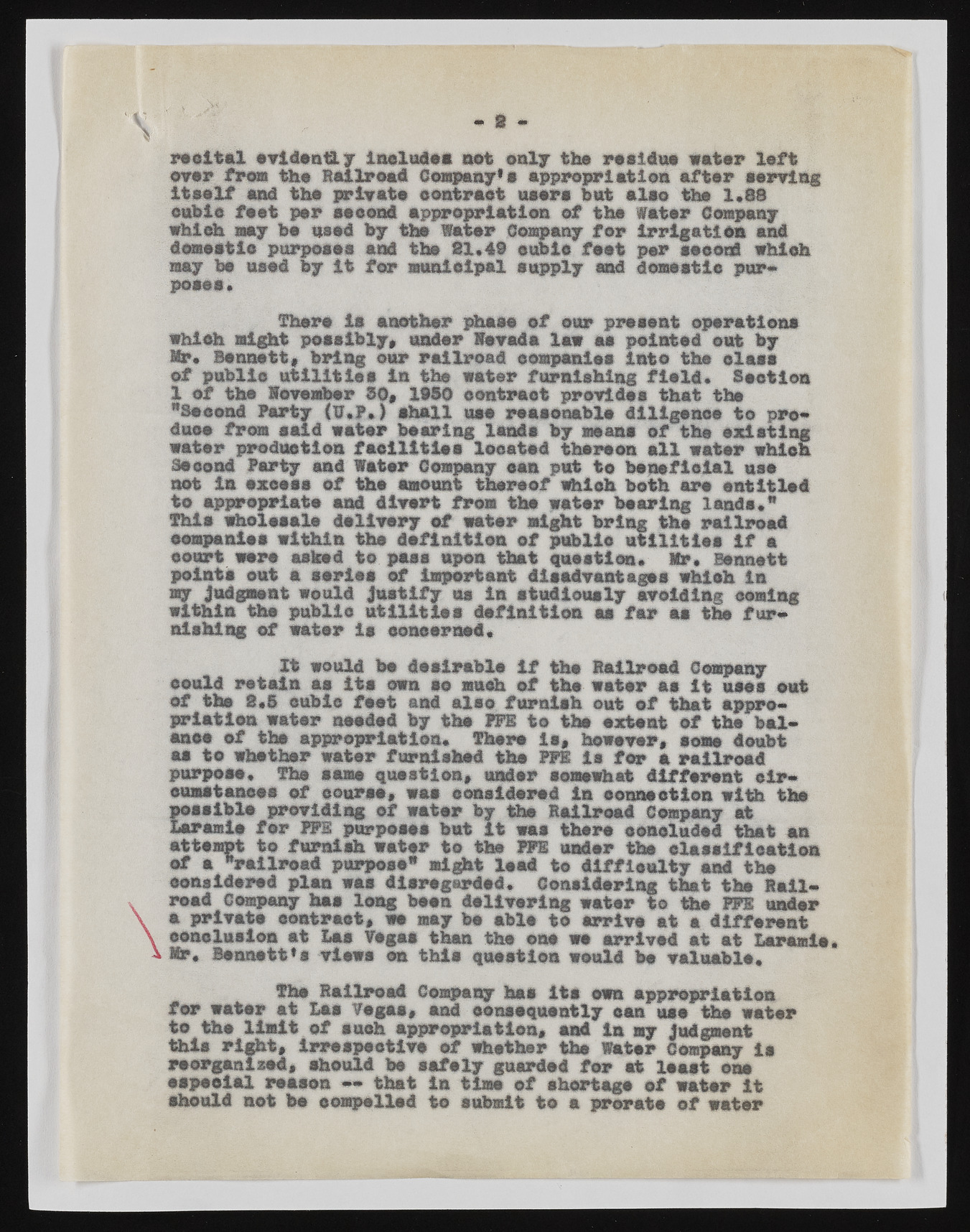Copyright & Fair-use Agreement
UNLV Special Collections provides copies of materials to facilitate private study, scholarship, or research. Material not in the public domain may be used according to fair use of copyrighted materials as defined by copyright law. Please cite us.
Please note that UNLV may not own the copyright to these materials and cannot provide permission to publish or distribute materials when UNLV is not the copyright holder. The user is solely responsible for determining the copyright status of materials and obtaining permission to use material from the copyright holder and for determining whether any permissions relating to any other rights are necessary for the intended use, and for obtaining all required permissions beyond that allowed by fair use.
Read more about our reproduction and use policy.
I agree.Information
Digital ID
Permalink
Details
More Info
Rights
Digital Provenance
Publisher
Transcription
root tail evidently Includes not only the residue water left over from tlx# Railroad Company*a appropriation after serving Itself and the private contract users bat eleo the 1.88 ©able feet per second appropriation of the water Company which may be used by the water Company for irrigation and domestic purposes and the 81.49 cubic feet per second which may be meed by it for municipal eapply and domestic purposes. There it another phase of our present operations •hioh sight possibly, under Herada law aa pointed out by Mr. Bennett# bring our railroad companies into the class of public utilities in the water furnishing field. Section 1 of the November SO* 1950 contract provides that the "second Party (C.P.) shall use reasonable diligence to pro-duos from said water bearing lends by means of the existing water production facilities located thereon ell water whleh Second Party and Water Company can pot to beneficial use not in excess of the amount thereof which both arc entitled to appropriate and divert from the water bearing lands.” This wholesale delivery of water might bring the railroad companies within the definition of publio utilities if e court were caked to pees upon that question. Mr. Bennett points out a series of important disadvantages which In aqr Judgment would Justify os in studiously avoiding coming within the publio utilities definition ee far as the furnishing of water is concerned. It would be desirable If the Railroad Company could retain as its own so much of the wstor as It uses out of the 8,5 cubic feet and also furnish out of that appropriation water needed by the PPB to the extent of the balance of the appropriation. There ia* however* some doubt as to whither water furnished the PPS is for a railroad purpose. The same question* under somewhat different elr-eunstanees of course, was considered in connection with the possible providing of water by the Railroad Company at leramio for PPB purposes but it wee there eenoluded that an attempt to furnish water to the PPE under the classification of a "railroad purpose” might lead to difficulty and the considered plan was disregardtd. Considering that the Railroad Company has long boon delivering wstor to the PPB under s private contract, we may be able to arrive at a different conclusion at ins Vegas than the one we arrived at at Laras>ia Mr. Bennett*• views on this question would bo valuable. The Railroad Company has its own appropriation for wstor at &*» Vegas* and consequently can use the water to the limit of ouch appropriation* and in my jud asset this right* irrespective of whether the Water Company is reorganised* should bo safely guarded for at least one especial reason — that In tint of shortage of water it should not bo compelled to submit to a prorate of water

